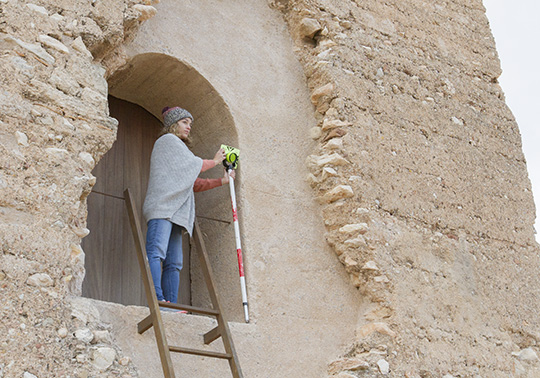Archaeologists find evidence of cannibal practices in Mesolithic human remains in Marina Alta
- January 12nd, 2017

The research team led by archaeologists of the UV has made public an important archaeological discovery, a result of the dig works carried out in the Coves de Santa Maira, in Castell de Castells (Marina Alta). It is a set of 30 human remains with signs of human manipulation that date from between 10200 and 9000 years before Christ related to cannibal practices.
The study, published in the academic magazine ‘Journal of Anthropological Archaeology’, gives evidence of a man-eating, cannibalistic behaviour, among the groups of hunters and pickers of the western basin of the Mediterranean during the Mesolithic. This hypothesis is the best explanation for the results obtained after the analysis of the pieces of the Mesolithic period found in the ‘Boca Oeste’ of the Coves de Santa Maira. The study of the cranial and postcranial remains has made the team of archaeologists determine the presence of at least three individuals: two adults and a child of approximately two years old.
The researchers of the Department of Prehistory, Archaeology and Ancient History of the UV, Juan V. Morales-Pérez, Manuel Pérez Ripoll, Carles Miret i Estruch, C. Carlos Verdasco Cebrián and J. Emili Aura Tortosa have carried out the fieldwork, study and analysis together with Mª Paz de Miguel Ibáñez (Department of Prehistory, Archaeology and Ancient History, Greek Philology and Latin Philology of the University of Alacant), Domingo C. Salazar-García (Dept. of Archaeology of the University of Cape Town, South Africa and of the Dept. of Archaeogenetics, Max Planck Institute for the Science of Human History) and Jesús F. Jordá Pardo (Laboratory of Palaeolithic Studies of the National University of Distance Education, Madrid).
It has been determined that the signs found on these remains “follow the logical order of a process of carnage and consumption”, explains Juan V. Morales Pérez, who points out that based on the different signs (made with tools of stone, teeth, percussion and fire) and according to him, it is possible to claim that they are a result of a cannibalistic behaviour. The difficulty that entails the identification and attribution of the marks found, especially the teeth marks due to the similarity of the human marks with the marks of other meat-eaters, has led to some comparative studies with the ones identified on animal remains found in the same layers of the site.
“We know that hunters and pickers of the Mesolithic (10500-7000 years) jointly exploited different resources and ecosystems, from the coast to mountains. Consequently, they were groups who knew and consumed a great variety of resources, without a nutritional lack that enables an explanation of this behaviour”, he adds.
The director of the excavation project, J. Emili Aura, full university professor of Prehistory of the UV, points out that the possibility of these practices being exceptional, with a strictly alimentary purpose, cannot dismiss “the hypothesis of socially established practices, a result of episodes of individual or group violence or even rituals”, since this discovery coincides with a process of cultural and demographic change. From the Mesolithic era on, funerary practices become more diversified, including the generalisation of cemeteries.
This discovery leads to a great number of questions both in the field of human palaeontology and social practices of the last prehistoric hunters of South Spain: nourishment, ritual practices and the use of violence between groups.
Publication of the article and pictures of the remainders
















